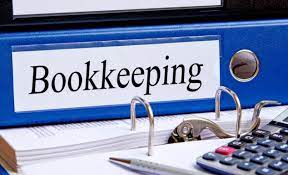According to the U.S. Small Business Administration, small businesses are the backbone of the American economy, creating two-thirds of all net new jobs and 44% of total economic activity. Imagine you are a shareholder in a company whose stock goes up a lot. You decide to sell your shares and make a nice profit without worrying about taxes. Qualified small business stock, also called Section 1202 stock after the part of the Tax Code that governs it, can be a great planning tool for the right business, like a tech startup. To gain a better understanding of how it works, let’s go over the requirements and the exemption.
What Is Stock in a Qualified Small Business?
As long as the stock is held for at least five years after it is bought, shareholders of certain qualified small-business stock (QSBS) can keep a big chunk of the capital gains from selling or exchanging the stock. It’s possible to deduct anywhere from 50 percent to 100 percent of your gains from your gross income when filing your federal income tax return. The owners of QSBS are typically the business’s employees and investors.
How Qualified Small Business Stock Works
For qualified small-business stock, there are two main requirements: To get tax breaks, both the business you invest in and you as an investor must meet certain criteria.
#1. Finding Qualified Small Businesses
To take advantage of the qualified small-business stock exemption, you must invest in a qualified company, which means: There must be evidence that the issuer is a currently operating domestic C-corporation. The business must be set up as a C-corporation because an S-corporation is not allowed in the United States. Also, unlike a holding company, the corporation has to do business, not just hold assets. The issuer’s assets must not exceed $50 million: both before and after stock issuance.
The issuer’s business cannot operate in prohibited industries. Personal services, banking, financing, insurance, investing, leasing, farming, mining, and running a hotel, motel, or restaurant are all industries that are not allowed. Technology, wholesale or retail, and manufacturing are examples of industries that generally qualify.
The stock must be issued directly by the issuer. Under the original issuance rule, the stock must be bought directly from the company that made it, either in exchange for cash or property or as payment. Employee benefits like RSUs, options, and convertible securities are allowed, but buying stock from someone else or through the secondary markets is not.
Note: For the purposes of wealth transfer and charitable giving, the IRS allows QSBS to be a blessing under certain conditions.
Along with finding a good company to invest in, investors must also follow certain rules. You cannot exist as a corporation. The qualified small-business stock exemption is available only to individuals, trusts, and pass-through entities. You must complete a holding period. The length of time a stock is held determines the extent of a shareholder’s tax benefits:
- For stocks purchased before February 18, 2009, and held for more than five years, the maximum capital gains exclusion is 50%, with an additional 7% subject to the alternative minimum tax.
- For stocks purchased between February 18, 2009, and September 27, 2010, and held for more than five years, the maximum capital gains exclusion is 75%, with an additional 7% subject to the alternative minimum tax.
- Gains on stocks purchased after September 27, 2010, and held for more than five years, are tax-free. Long-term capital gains taxes apply to stocks held for more than a year but less than five years, while short-term capital gains taxes apply to stocks held for less than a year.
There is a maximum gain cap. A shareholder can exclude any gain up to ten times the adjusted cost basis. The investment’s original asset value is $10 million. You might be able to postpone your gain. Shareholders who sell the stock before holding it for five years can still receive tax benefits.
Qualified Small Business Stock Exemption
IRS Code Section 1202 defines the QSBS rules. This section is also the qualified small business stock gain exclusion, which will be updated on September 27, 2010. According to the code, those who own stock in eligible companies with less than $50 million in assets can exclude gains from federal taxation. The number of gain exclusion limits is set at $10 million, or 10 times the stock’s adjusted basis. As was already said, in order to get the qualified small business stock gain exclusion, shareholders must have owned the stock for at least five years.
Qualification Requirements for Qualified Small-Business Stock Exemption
If an investor’s QSBS doesn’t meet the requirements for qualified small-business stock, they won’t get the tax breaks either. There will be taxation on ineligible stock sales, which will be at the capital gains rate. To meet the QSBS requirements, you must:
- A 409A valuation of $50 million or less is required. The 409A valuation is an unbiased assessment of a company’s assets.
- The equity must be in the form of a stock. Stock options, warrants, and convertible assets are ineligible.
- Must be held for a minimum of five years.
Stocks purchased after 2010 are also eligible for up to a 100% tax exemption. The maintenance of these qualifications should continue throughout the tenure of the position.
What Qualifies as a Small Business-Qualified Stock?
The stock is purchased by the investor with cash, property, or as payment for a service. The investor should maintain the stock for at least five years. At least 80% of the company’s assets must be useful to run one or more of its qualifying trades.
What Is the Qualified Small Business Stock Gain Exclusion?
Section 1202 exempts capital gains from qualified small business stocks from federal taxation. The stock must be held for at least five years to exclude the gains, among other requirements. This preferential tax treatment is intended to encourage investors to invest in small businesses.
How Do I Know if My Stock Is Qsbs?
For you to know if your stock is QSBS
- A corporation cannot be an investor.
- The purchasing of the stock should not be in the secondary market, but only when it is available to the public.
- The investor must have paid cash or property for the stock or taken it as payment for a service.
How Do You Prove Qsbs?
To prove that there is stock for qualified small businesses:
- You must obtain original, issued shares.
- They must be received directly from a qualified small business that is taxed as a C-corporation.
- At the time of issuance, the company’s total gross assets cannot exceed $50 million.
- Such shares must be held for at least 5 years.
Can an LLC Own Qualified Small Business Stock?
Yes, small corporations, trusts, partnerships, and LLCs can all own qualified small business stock. When pass-through entities own QSBS, specific rules apply. The gain from the sale of QSBS by a pass-through entity is passed on to the pass-through entity’s owners and is shown on their tax returns.
How Can I Obtain QSBS Stock?
You must own company stock, not options or other types of securities. To own QSBS stock, you must also be an individual, a trust, or another pass-through entity. Your actual securities will be QSBS-eligible only after you exercise and convert options (including ISOs, NSOs, and ISO/NSO splits), warrants, or convertible debt into stock. But the possibility of being eligible for QSBS has no effect on any costs, taxes, or fees you may have to pay as a shareholder when you participate.
To get the tax benefit, a shareholder must have owned eligible shares for at least five years. These are shares bought from the company or given out when an employee exercises an equity award. If you own eligible shares, you may face tax liabilities on the sale of those shares if you sell before the holding period is over.
Furthermore, after the five-year holding period, shareholders may sell their QSBS-qualified stock and potentially deduct up to 100% of capital gains from federal taxes. You can also sell stock in a private company through tender offers (also called “buyback events”), bilateral secondary transactions, and initial public offerings (IPOs).
Benefits of Using the Qualified Small Business Stock Exclusion
The preceding example demonstrates the benefits that shareholders can potentially reap when investing in qualified small-business stock, as investors walked away with a $13 million tax-free gain. Because companies that qualify can get such big tax breaks, they can attract investors and use stock as an employee benefit to get and keep good workers. Small businesses that need more money and want to issue QSBS can also attract individual investors and encourage them to become long-term shareholders.
Benefits for Investors of Purchasing QSBS
- the chance to invest in the business they are helping to create
- Tax benefit of excluding all or a portion of capital gains from stock sales
- meets an aggressive long-term investment strategy for stockholders
Conclusion
Having the ability to sell qualified small business stock in the future without having to pay capital gains tax is a huge perk for investors. Make sure the QSBS fits into your investment and tax strategies by consulting your financial advisor and tax professional
FAQs
How much is the Qsbs exemption?
Each taxpayer is allowed to exclude from their taxable income the greater of $10 million or 10 times their adjusted basis in QSBS sold in any given year.
How do I maximize QSBS?
1. by contributing cash in exchange for QSBS shares, and 2. by selling high-basis QSBS alongside low-basis QSBS in the same calendar year.
Do startups qualify for QSBS?
You must be a domestic C-corporation in order for your startup’s stock to qualify for this tax break.
- The Difference Between Qualified Purchasers and Accredited Investors
- Credit Shelter Trust: The Complete Guide for Beginners (+ Quick Tips)
- Exemptions On Taxes: Tax Exemption Explained!
- SALES LEADS: How to Generate Sales Lead for any Business, Explained!!!
- BUSINESS LOANS FOR WOMEN: Best 10+ Startup, Government and Minority Options (Updated)






